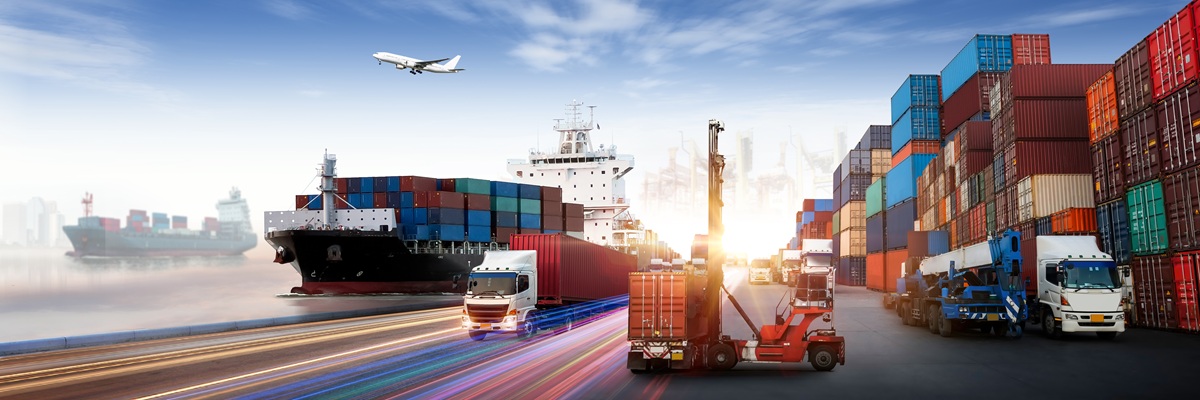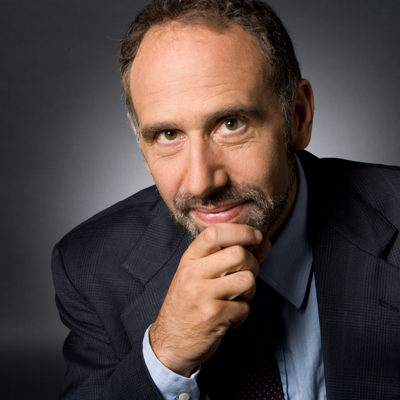Energy & Economics
A Quick Note on Trade and Inequality

Image Source : Shutterstock
Subscribe to our weekly newsletters for free
If you want to subscribe to World & New World Newsletter, please enter
your e-mail
Energy & Economics

Image Source : Shutterstock
First Published in: Dec.23,2024
Jan.20, 2025
Oren Cass, the head economist of Compass, had a column in the New York Times today touting Donald Trump’s proposed tariffs. The gist of the piece is that “free trade” has not worked out as economists’ textbooks promised and we should look to take a different path.
As someone who was very critical of the major trade deals of the last three decades, I would say that they did work out very much as the economists’ textbooks promised. But they were also not “free trade,” and imposing high tariffs will not help us going forward.
First, the economists’ textbooks did not promise that everyone would benefit from opening trade. They show that there would be a redistribution from some types of workers to other types of workers and/or capital. There is a famous article, co-authored by the first American Nobel Prize winner Paul Samuelson, that laid out this theoretical argument more than 80 years ago.
Economists pushing NAFTA, China’s entry into in the WTO, and other recent trade deals always waved off the logic of the Stolper-Samuelson model, or alternatively promised government policies to offset the distributional impact of trade openings. As a practical matter, the policies (mostly trade-adjustment assistance) were one or two orders of magnitude too small for the job.
We saw millions of workers displaced in manufacturing, as our trade deficit ballooned from 1997 to 2007. Communities across the industrial heartland were devastated as the factories that supported them downsized or shut altogether. We can have lengthy debates about the motives of working class people who switched from Democrats to Trump voters, but the fact that Democratic presidents pushed trade policies that destroyed millions of good paying jobs for non-college educated workers is not really in dispute.
While it is important to recognize the damage caused by trade deals of the last three decades, it is also essential to recognize that these were not “free trade” deals even though this is what their proponents like to claim. These deals did little or nothing to free up trade in highly paid professional services, like the services of physicians or dentists. As a result, while our manufacturing workers get paid less than their counterparts in Western Europe, our physicians get paid more than twice as much as doctors in countries like Germany and Canada.
The trade deals were all about lowering barriers to trade in manufactured goods, with the predictable effect of lost jobs and lower wages for manufacturing workers. But when it came to discussions of lowering the barriers to foreign doctors and foreign-trained professionals working in the U.S., most of the “free-traders” would suddenly get really dumb, as though they didn’t understand the concept of free trade.
And to be clear, the economics textbooks tell us the same thing about free trade in professional services as they say about free trade in cars and shoes. If we paid our doctors the same as doctors in West Europe it would knock more than $100 billion a year ($1,000 per family) off our national health care bill. But we don’t have free trade in physicians’ services.
But it gets worse. Even as we were lowering barriers to trade in manufactured goods, we were increasing barriers to trade in intellectual products in the form of longer and stronger patent and copyright protections. These protections are government-granted monopolies, 180 degrees opposite of free trade. Yet somehow every major “free trade” deal of the last four decades included provisions making these monopolies longer and stronger both in our trading partners and in the United States.
The effect of longer and stronger patent and copyright protection is to redistribute income from the rest of us to those in a position to benefit from them. Bill Gates would probably still be working for a living if the government didn’t threaten to arrest people who copied Microsoft software without his permission.
And to be clear, there is an enormous amount of money at stake. The higher prices from patent and copyright monopolies almost certainly cost us more than $1 trillion a year. They cost us more than $500 billion ($4,000 per family) in the case pharmaceutical alone.
Patent and copyright monopolies do serve a purpose. They provide an incentive for innovation and creative work. But they are not the only way to provide this incentive. For example, we support more than $50 billion a year in biomedical research through the National Institutes of Health and other government agencies.
Most importantly for this argument is the recognition that patent and copyright monopolies are government policies that should be treated as such. We can argue whether they are the best policy, but they are certainly not free trade, and it is a lie to call them free trade.
Tariffs and the Trump Route Forward
Getting the free trade story right is important for what we think is the best route going forward. The fact that reducing trade barriers in manufacturing was bad for non-college educated workers doesn’t mean that raising those barriers now will be good news for these workers.
The wage premium that manufacturing workers had enjoyed in years past had largely disappeared. This means that if we get back jobs in the auto industry or textile industry, there is little reason to think these jobs will pay better than alternative jobs in warehouses or health care. High tariffs just mean that all workers will be paying higher prices for a wide range of goods in order to shift a relatively small number of other workers into not especially good-paying jobs in manufacturing.
The reason manufacturing jobs were good paying jobs was because these jobs were far more likely to be union jobs than other private sector jobs. In 1980 more than 30 percent of manufacturing jobs were unionized, compared to 15 percent for the rest of the private sector. Today, the gap is just 8.0 percent compared to 6.0 percent.
That’s still a difference, but not one that has much impact. If we got back another 1 million manufacturing jobs as a result of tariffs, a very big lift, it would translate into roughly 20,000 more union workers. That’s a pretty small drop in the bucket in a labor force of more than 160 million.
If we want to reverse the rise in inequality of the last four decades, we should make use of those economics textbooks rather than ignoring them, as Mr. Cass advocates. We should do everything possible to have freer trade in highly paid professional services, exposing our most highly paid workers to the same sort of competition, both domestically and internationally, that our factory workers have long faced.
And we should look to shorten and weaken the patent and copyright monopolies that have shifted so much income upward and made items like prescription drugs incredibly expensive. In the absence of patent monopolies, drugs would almost always be cheap, patent monopolies make them expensive. We also need to pursue other mechanisms for supporting innovation and creative work.
This is the conversation that we need to have and one that unfortunately will not take place in the pages of the New York Times or other leading media outlets. In fact, the econ textbooks have much to teach us if we actually pay attention to what they say and don’t use them selectively to push a class agenda.
Originally published on CEPR (https://cepr.net/publications/a-quick-note-on-trade-and-inequality/) under the Creative Commons Attribution 4.0 International License.
First published in :

Dean Baker co-founded CEPR in 1999. His areas of research include housing and macroeconomics, intellectual property, Social Security, Medicare, and European labor markets. His blog, Beat the Press, provides commentary on economic reporting. His analyses have appeared in many major publications, including The Atlantic, The Washington Post, the Financial Times (London), and the New York Daily News. Dean received his BA from Swarthmore College and his PhD in economics from the University of Michigan.
Dean has written several books, including Getting Back to Full Employment: A Better Bargain for Working People (with Jared Bernstein, Center for Economic and Policy Research, 2013); The End of Loser Liberalism: Making Markets Progressive (Center for Economic and Policy Research, 2011); Taking Economics Seriously (MIT Press, 2010), which thinks through what we might gain if we took the ideological blinders off of basic economic principles; and False Profits: Recovering from the Bubble Economy (PoliPoint Press, 2010), about what caused — and how to fix — the 2008–2009 economic crisis. In 2009, he wrote Plunder and Blunder: The Rise and Fall of the Bubble Economy (PoliPoint Press), which chronicled the growth and collapse of the stock and housing bubbles and explained how policy blunders and greed led to catastrophic — but completely predictable — market meltdowns. He also wrote a chapter (“From Financial Crisis to Opportunity”) in Thinking Big: Progressive Ideas for a New Era (Progressive Ideas Network, 2009). His previous books include The United States Since 1980 (Cambridge University Press, 2007), The Conservative Nanny State: How the Wealthy Use the Government to Stay Rich and Get Richer (Center for Economic and Policy Research, 2006), and Social Security: The Phony Crisis (with Mark Weisbrot, University of Chicago Press, 1999). His book Getting Prices Right: The Debate Over the Consumer Price Index (editor, M.E. Sharpe, 1997) was a winner of a Choice Book Award as one of the outstanding academic books of the year.
Among his numerous articles are “The Benefits of a Financial Transactions Tax,” Tax Notes 121, no. 4 (2008); “Are Protective Labor Market Institutions at the Root of Unemployment? A Critical Review of the Evidence” (with David R. Howell, Andrew Glyn, and John Schmitt), Capitalism and Society 2, no. 1 (2007); “Asset Returns and Economic Growth,” with Brad DeLong and Paul Krugman, Brookings Papers on Economic Activity (2005); “Financing Drug Research: What Are the Issues,” Center for Economic and Policy Research (2004); “Medicare Choice Plus: The Solution to the Long-Term Deficit Problem,” Center for Economic and Policy Research (2004); “Professional Protectionists: The Gains From Free Trade in Highly Paid Professional Services,” Center for Economic and Policy Research (2003); and “The Run-Up in Home Prices: Is It Real or Is It Another Bubble?,” Center for Economic and Policy Research (2002).
Dean previously worked as a senior economist at the Economic Policy Institute and an assistant professor at Bucknell University. He has also worked as a consultant for the World Bank, the Joint Economic Committee of the US Congress, and the OECD’s Trade Union Advisory Council. He was the author of the weekly online commentary on economic reporting, the Economic Reporting Review, from 1996 to 2006.
Unlock articles by signing up or logging in.
Become a member for unrestricted reading!